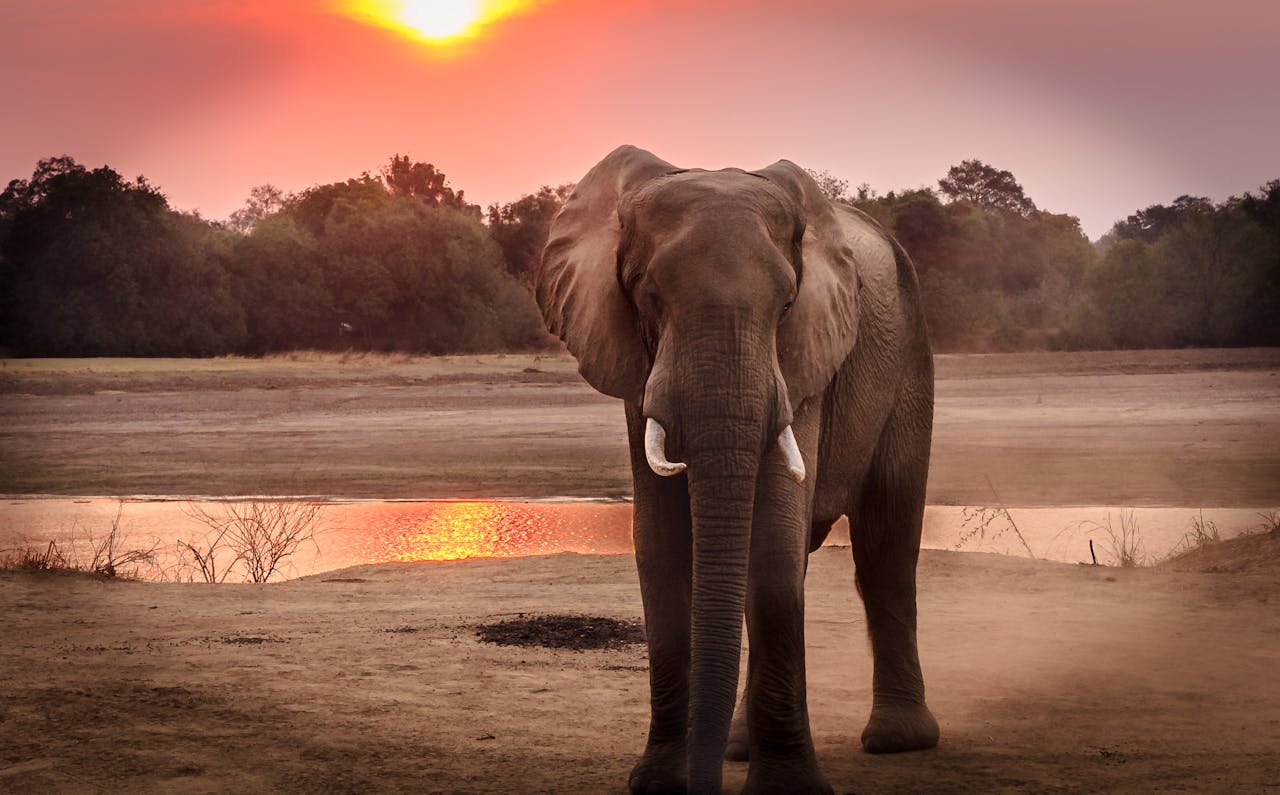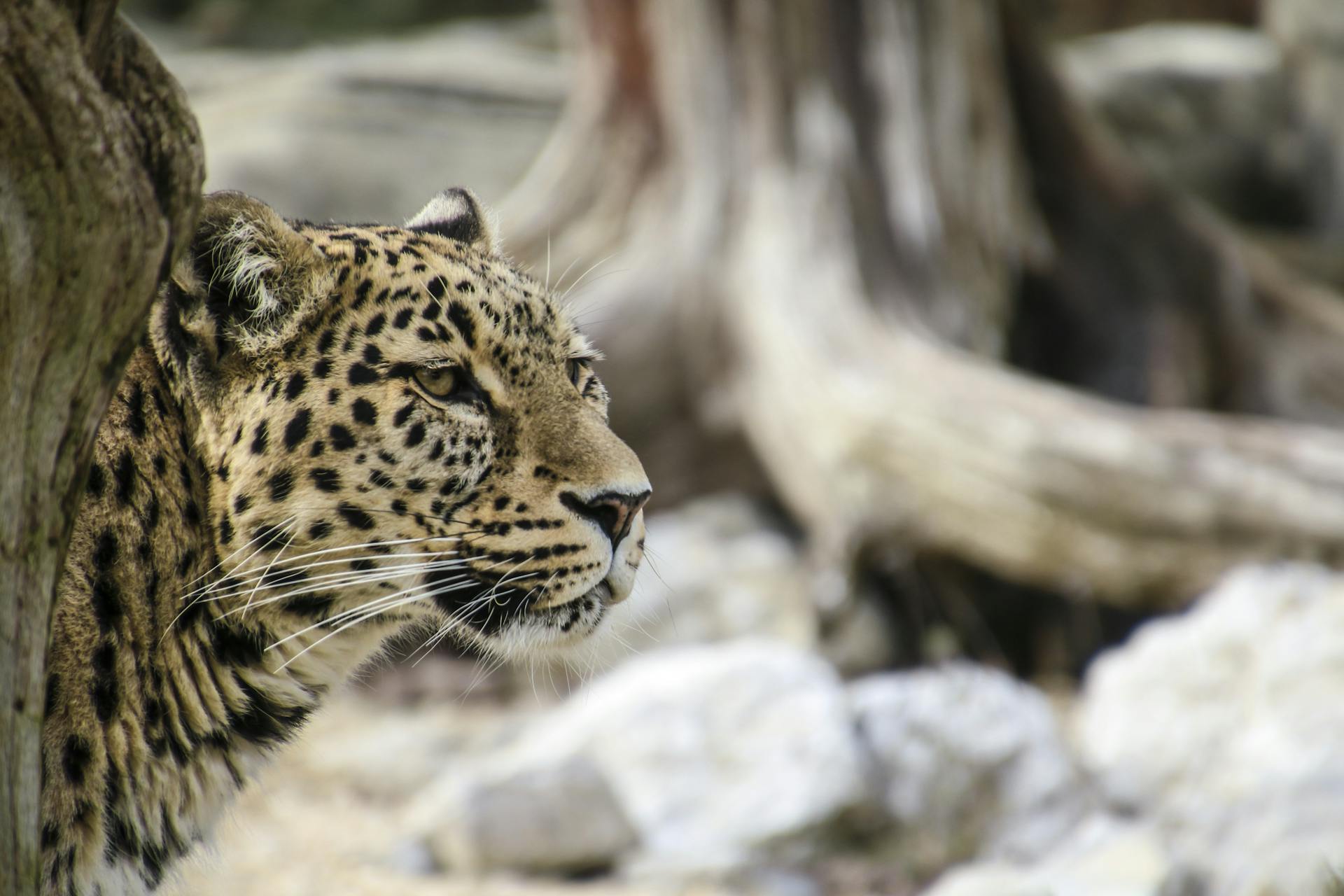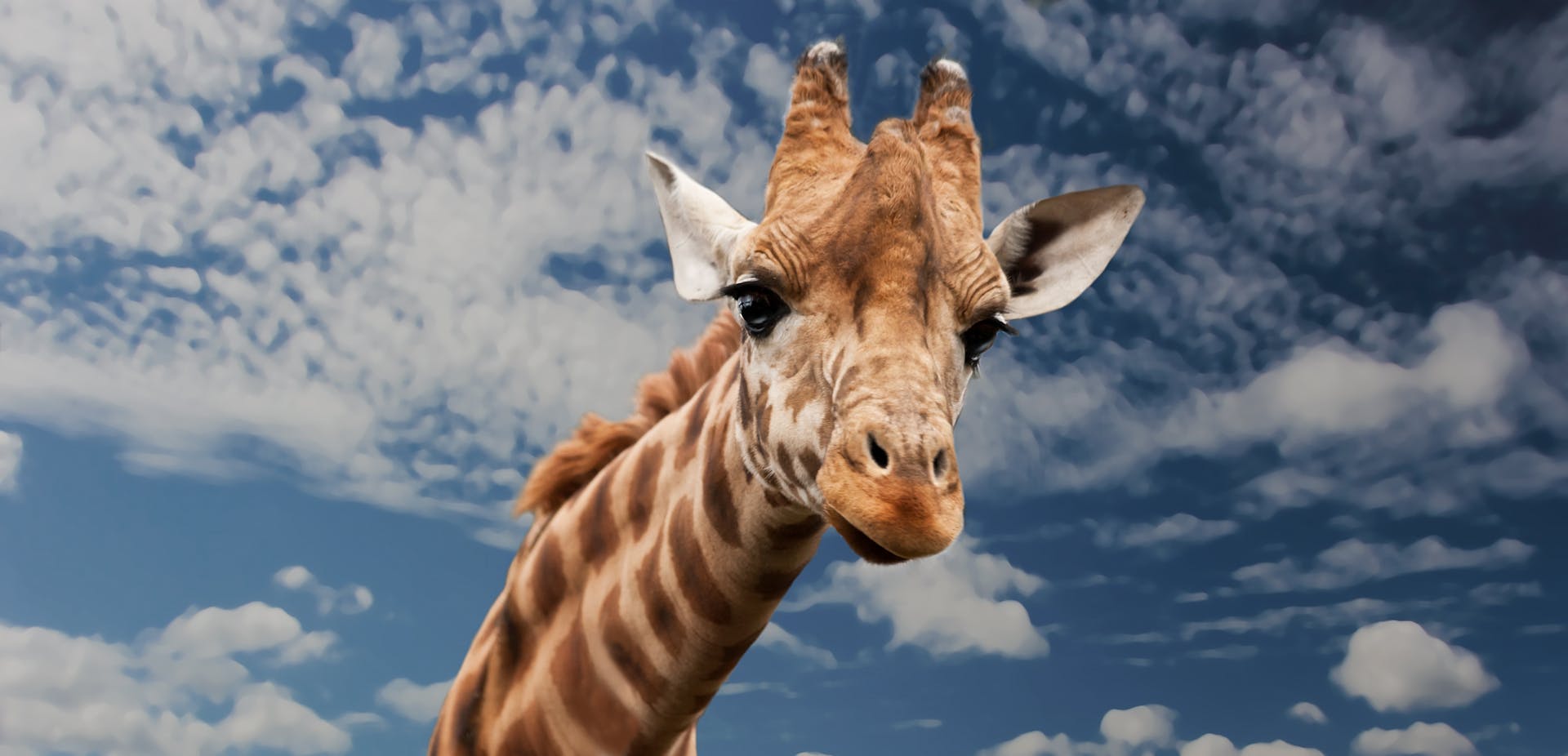In the golden light of dawn, the African savanna awakens to the majestic silhouette of a colossal elephant. Its massive frame, silhouetted against the horizon, moves with a grace that belies its size. Each step sends a ripple through the tall grass, as its trunk swings rhythmically, deftly foraging for the day’s sustenance. This is not merely a sight to behold; it is a reminder of the profound role these giants play in the tapestry of life across Africa’s diverse landscapes.
The African elephant, the largest land mammal on Earth, stands as a towering symbol of strength and majesty amidst the sprawling savanna. These gentle giants are more than just iconic creatures; they are vital architects of their environment. Their movements shape the landscape, their feeding habits influence the growth of flora, and their very presence supports a myriad of other species. Understanding and preserving these remarkable animals is not just an ecological imperative but a testament to our commitment to maintaining the delicate balance of the natural world. As we delve into the life and significance of the African elephant, we uncover the urgent need to safeguard these magnificent guardians of the savanna for future generations.
Species and Subspecies
The African elephant is divided into two distinct subspecies, each adapted to different environments across the continent. The African Forest Elephant, smaller and more elusive, roams the dense rainforests of West and Central Africa. It has shorter, straighter tusks and a more rounded body, adapted to navigating the thick undergrowth of its habitat. In contrast, the African Savannah Elephant, the largest of the two, is found across the open plains and savannas of East and Southern Africa. With its larger ears shaped like the continent of Africa and more curved tusks, this subspecies is better suited to its expansive, arid environment.
Physical Characteristics
African elephants are renowned for their impressive size and distinctive features. Adults can weigh between 8,000 to 14,000 pounds, with males generally being larger than females. Their enormous ears, which can measure up to six feet across, help regulate body temperature and provide acute hearing. The trunk, a versatile and sensitive organ, serves as a tool for feeding, social interaction, and environmental exploration. Their tusks, which are elongated incisor teeth, are used for digging, stripping bark, and defense. These physical characteristics make the African elephant a remarkable presence in its habitat.
Behavior and Social Structure
African elephants are highly social animals, forming complex herds led by a matriarch, the oldest and often the most experienced female. These herds, composed of related females and their young, exhibit strong familial bonds and cooperative behaviors. The males, once reaching maturity, typically leave the herd to live more solitary lives or form loose bachelor groups. Communication within herds is intricate, involving a range of vocalizations from trumpeting to subtle rumbles that can travel long distances. Elephants also use infrasound, frequencies below human hearing, to convey messages over vast areas, facilitating coordination and social cohesion.
Role in the Ecosystem
Habitat Maintenance
African elephants play a critical role in maintaining their ecosystems. Their feeding habits, which include stripping bark and uprooting trees, help shape the landscape by preventing the overgrowth of certain vegetation and promoting a diverse range of plant life. This natural pruning process helps maintain the balance between grasslands and forests, creating habitats for various other species. Additionally, elephants are essential for seed dispersal; their dung carries seeds that germinate in new locations, aiding in the regeneration of plant species across the savanna.
Influence on Other Species
The impact of African elephants extends beyond vegetation. Their activities create and sustain waterholes that provide essential resources for other wildlife during dry periods. By clearing paths and creating open spaces, they influence the movement patterns of various animals, facilitating access to food and water. Their presence also supports a web of interdependent species, from smaller mammals and birds that thrive in the environments they shape to the plants that rely on their seeds for dispersal.
Conservation Challenges
Human-Wildlife Conflict
The African elephant faces significant threats from human-wildlife conflict. As human populations expand, elephants encounter encroaching settlements and agricultural lands, leading to habitat loss and increased interactions with people. These encounters often result in property damage and can escalate to dangerous confrontations. Poaching remains a severe threat, driven by the demand for ivory, which fuels illegal wildlife trade and poses a critical challenge to elephant populations.
Climate Change
Climate change exacerbates the challenges faced by African elephants by altering their habitats and resources. Shifting weather patterns affect the availability of food and water, putting additional stress on already vulnerable populations. Prolonged droughts can lead to habitat degradation and reduce the quality of resources necessary for elephant survival.
Conservation Efforts
Addressing these challenges requires a multifaceted approach. Anti-poaching initiatives, including increased patrolling and stricter law enforcement, are crucial in curbing illegal ivory trade. Habitat protection and restoration projects aim to preserve and rehabilitate the ecosystems elephants rely on. Community involvement and education are essential to fostering coexistence between people and elephants, ensuring that local communities benefit from and support conservation efforts.
Stories of Resilience
Famous Conservation Successes
There have been notable successes in elephant conservation that demonstrate hope and resilience. Programs such as the African Elephant Conservation Initiative have made significant strides in reducing poaching and protecting critical habitats. Success stories from regions like Kenya, where conservation efforts have led to the recovery of elephant populations, serve as powerful examples of what can be achieved through dedicated efforts.
Personal Accounts
The experiences of conservationists and researchers provide valuable insights into the daily challenges and triumphs of working with African elephants. Stories from field experts highlight the bond between humans and elephants, the innovative strategies employed to protect them, and the ongoing need for support and collaboration in conservation work.
How to Support African Elephant Conservation
Ways to Get Involved
Individuals can play a crucial role in elephant conservation by supporting organizations dedicated to their protection. Donations to reputable conservation groups help fund anti-poaching efforts, habitat preservation, and community outreach programs. Volunteering with organizations involved in wildlife protection offers hands-on opportunities to contribute to conservation efforts.
Advocacy and Education
Raising awareness about the plight of African elephants is vital in garnering support for their conservation. Advocacy efforts can include promoting sustainable practices and encouraging responsible consumer behaviour to reduce the demand for ivory. Educational campaigns help inform the public about the importance of elephants and the need for collective action to ensure their survival.
Conclusion
African elephants are integral to the health and balance of their ecosystems. Their majestic presence and ecological roles underscore the importance of our commitment to their conservation. As we face ongoing challenges and threats, it is essential to support and engage in efforts to protect these magnificent creatures. By taking action and advocating for their preservation, we contribute to ensuring a future where African elephants continue to roam the savannas, embodying the spirit of the wild.


